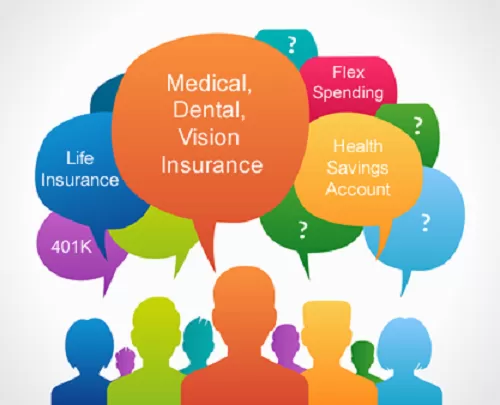Medicare Advantage Agent for Beginners

Voters and policy manufacturers in emphasis team discussions characterize those without insurance policy as youths that have the chance to be covered and feel they do not require it (Porter Novelli, 2001). Compared to those with at the very least some personal insurance coverage, the without insurance are less most likely to report remaining in excellent or really great health and wellness(Agency for Medical Care Research and Quality, 2001). RESOURCE: Facility for Expense and Financing Research Studies, Agency for Medical Care Research and Top quality, based on MEPS information. Youthful adults in between 19 and 34 are much more most likely to do not have wellness insurance than any kind of various other age. This is mainly due to the fact that they are less often qualified for employment-based insurance as a result of the nature of their work or their brief tenure in it. The understanding that people without insurance policy have better-than-average wellness
adheres to from puzzling the reasonably young age account of the without insurance with the much better health and wellness, generally, of younger persons. This obscures the link in between health condition and wellness insurance. For those without accessibility to work environment wellness insurance policy, inadequate health is a possible barrier to purchasing nongroup insurance coverage due to the fact that such protection might be extremely valued, omit pre-existing conditions, or be merely unavailable. The number of without insurance Americans is not particularly huge and has not changed over the last few years. Seven out of 10 participants in a country wide representative study assumed that less Americans did not have medical insurance than really do(Fronstin, 1998). About fifty percent(47 percent )thought that the number of individuals without medical insurance decreased or remained consistent over the latter fifty percent of the last years(Blendon et al., 1999). This decrease of practically 2 million in the variety of individuals 'without insurance (a reduction
of about 4 percent)is certainly a favorable modification. With a softer economic climate in 2000 the newest reported gains in insurance coverage may not proceed(Fronstin, 2001 ). The decline in the number of uninsured will certainly not continue if the economic situation stays slow-moving and health and wellness care prices continue to outmatch inflation. This is because the data were accumulated for a duration of solid economic efficiency. Of the estimated 42 million people who were uninsured, all but regarding 420,000(about 1 percent)were under 65 years of age, the age at which most Americans end up being eligible for Medicare; 32 million were grownups in between ages 18 and 65, around 19 percent of all grownups in this age team; and 10 million were youngsters under 18 years of age, about 13.9 percent of all children (Mills, 2000). These price quotes of the number of persons uninsured are created from the yearly March Supplement to the Existing Populace Study (CPS), performed by the Demographics Bureau. Unless otherwise kept in mind, national price quotes of people without wellness insurance coverage and proportions of the populace with various sort of protection are based on the CPS, the most widely used resource of price quotes of insurance protection and uninsurance prices. These surveys and the price quotes they yield are defined briefly in Table B. 1 in Appendix B - Medicare Advantage Agent. These surveys vary in dimension and sampling methods, the questions that are asked about insurance
The Best Strategy To Use For Medicare Advantage Agent
coverage, and the time duration over which insurance policy coverage or uninsurance is determined(Lewis et al., 1998, Fronstin, 2000a ). Still, the CPS is particularly helpful because it produces yearly estimates reasonably swiftly, reporting the previous year's insurance coverage estimates each September, and because it is the basis for a consistent collection of estimates for more than 20 years, permitting analysis of trends in coverage gradually.
How Medicare Advantage Agent can Save You Time, Stress, and Money.
Over a three-year period beginning early in 1993, 72 million individuals, 29 percent of the U.S. population, were without insurance coverage for at least one month. Within a solitary year(1994), 53 million individuals experienced at least a month without insurance coverage(Bennefield, 1998a). 6 out of every ten uninsured grownups are themselves used. Although working does enhance the chance that and one's family members will certainly have insurance coverage, it is not a guarantee. Even members of households with 2 permanent wage income earners have nearly a one-in-ten opportunity of being uninsured (9.1 percent uninsured rate)(Hoffman and Pohl, 2000 ). The relationship in between wellness insurance coverage and access to care is well established, as recorded later on in this phase. Although the partnership in between health and wellness insurance and health results is neither direct nor straightforward, a considerable clinical and health solutions research literature links health insurance policy protection
to improved access to care, far better top quality, and improved personal and population wellness status. The second record, on individual health end results for uninsured adults, is represented by the inner circle of the number, while the 3rd record, on family wellness, incorporates the topics of the second report but highlights a various system of analysis, namely, the look at this website family. The 6th record official site in the series will offer details concerning approaches and efforts undertaken locally, statewide, or nationally to resolve the lack of insurance coverage and its adverse effects. Levels of evaluation for taking a look at the effects of uninsurance. This conversation of medical insurance coverage concentrates mainly on the united state populace under age 65 since basically all Americans 65 and older have Medicare or other public coverage.
Furthermore, it concentrates specifically on those without any kind of medical insurance for any kind of length of time. The issues dealt with by the underinsured remain in some aspects comparable to those dealt with by the without insurance, although they are generally less serious. Uninsurance and underinsurance, however, involve definitely various policy concerns, and the approaches for addressing them might vary. Throughout this study and the 5 reports to comply with, the major emphasis gets on individuals without any wellness insurance policy and therefore no aid in spending for healthcare past what is available through charity and security web institutions. Health and wellness insurance coverage is a powerful element affecting invoice of care since both clients and medical professionals react to the out-of-pocket rate of solutions. Wellness insurance policy, however, is neither essential neither enough to get to clinical solutions. Nonetheless, the independent and direct impact of health
insurance policy protection on access to health and wellness solutions is well established. Others will certainly acquire the healthcare they need also without health insurance policy, by spending for it out of pocket or seeking it from companies that use care free or at very subsidized prices. For still others, wellness insurance alone does not make certain receipt of care due to various other nonfinancial obstacles, such as a lack of health and wellness treatment carriers in their neighborhood, minimal access to transportation, illiteracy, or etymological and cultural differences. Official research regarding uninsured populaces in the USA dates to the late 1920s and very early 1930s when the Committee on the Cost of Treatment generated a collection of reports regarding funding physician office brows through and hospital stays. This concern became significant as the numbers of medically indigent climbed throughout the Great Depression. Empirical researches continually sustain the link between access to care and enhanced health and wellness results(Bindman et al., 1995; Starfield, 1995 ). Having a normal resource of treatment can be considered a predictor of access, instead of a straight procedure of it, when wellness end results are themselves utilized as access signs. This expansion of the notion of gain access to dimension was made by the IOM Board on Keeping An Eye On Accessibility to Personal Health Care Services(Millman, 1993, p. Whether or not moms and dads are guaranteed appears to impact whether or not their children receive care along with just how much careeven continue reading this if the kids themselves have coverage(Hanson, 1998). The wellness of moms and dads can influence their capacity to care for their kids and the degree of household anxiety. Fretting about their kids's access to care is itself a resource of stress for moms and dads. 3 phases follow in this report. Chapter 2 provides an introduction of just how employment-based health and wellness insurance coverage, public programs and private insurance coverage plans operate and communicate to offer comprehensive but insufficient insurance coverage of the U.S. populace. This includes a review of historical trends and public laws influencing both public and personal insurance coverage, a discussion of the interactions among the different sorts of insurance, and an evaluation of why individuals move from one program to an additional or wind up

Comments on “The Best Guide To Medicare Advantage Agent”